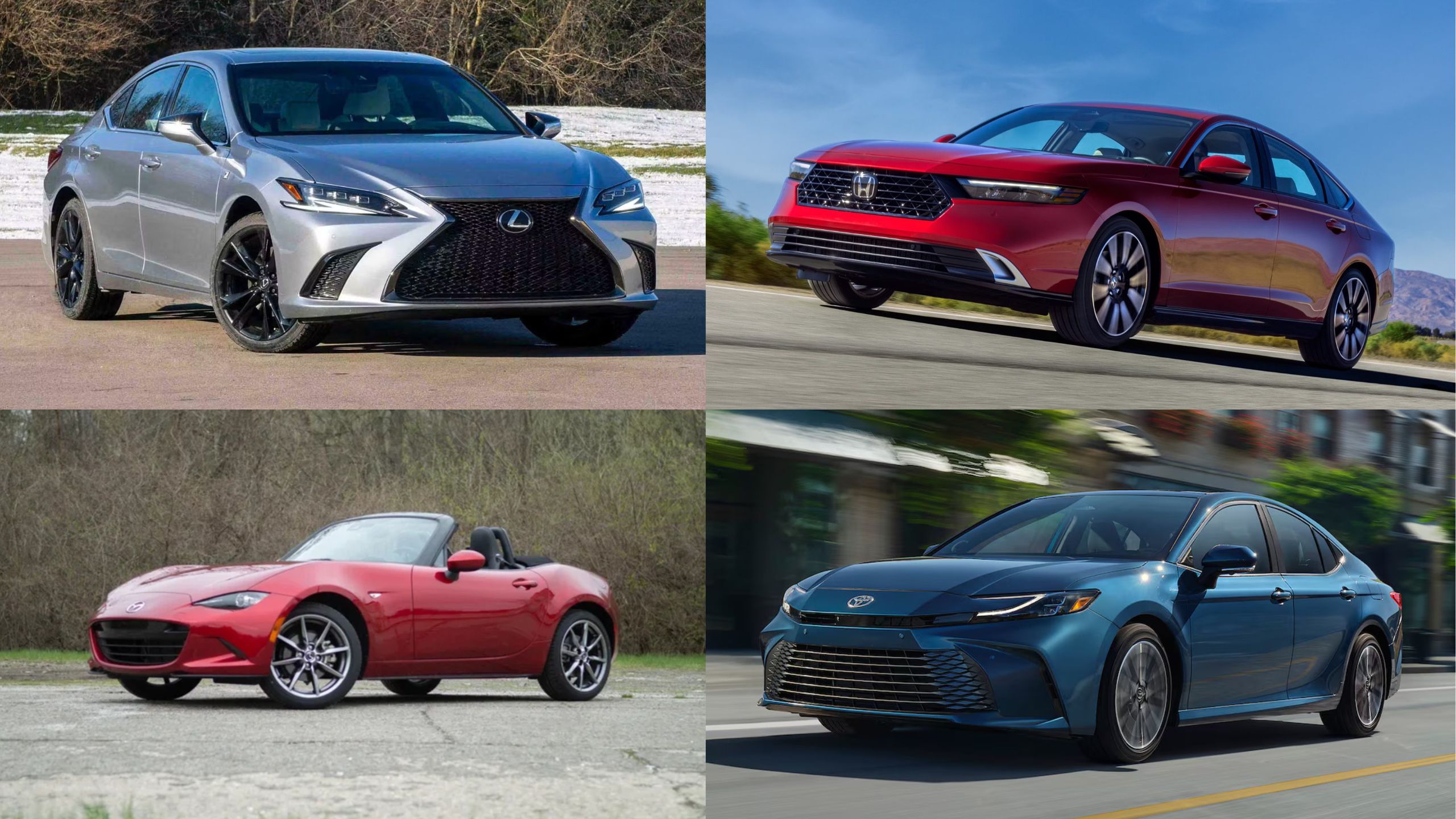Reliability remains one of the most critical factors when purchasing a vehicle. Beyond the allure of cutting-edge technology and sleek designs, consumers ultimately want a dependable car that won’t leave them stranded or require frequent trips to the repair shop.
Owner reliability ratings offer valuable real-world insights that often tell a more complete story than traditional reliability metrics alone. These ratings encompass not just mechanical dependability but also the ownership experience, including dealer service quality, ease of maintenance, and how well vehicles meet expectations over time.
The following vehicles have distinguished themselves by earning exceptional praise from their owners across various segments of the market. From economical daily drivers to luxury SUVs, these twelve models have developed reputations for consistent performance, durability, and owner satisfaction.
Each has demonstrated the ability to endure typical usage patterns while maintaining its functionality, comfort, and value. Whether you prioritize longevity, low maintenance costs, or trouble-free operation, these vehicles represent some of the most dependable options available, according to those who matter most, the owners who drive them every day.
1. Toyota Camry
The Toyota Camry has consistently maintained its position as one of the most reliable vehicles on the market, earning unwavering praise from owners who often report driving their vehicles well beyond 200,000 miles with minimal issues.
This midsize sedan’s legendary dependability stems from Toyota’s conservative engineering philosophy that prioritizes proven technology over cutting-edge innovations that haven’t withstood the test of time.
The Camry’s 2.5-liter four-cylinder and optional V6 engines have both demonstrated exceptional durability, with many owners reporting original powertrains functioning flawlessly even after a decade of service.
Maintenance simplicity contributes significantly to the Camry’s positive reliability ratings. Routine service items remain accessible, and Toyota’s widespread dealer network ensures parts availability virtually anywhere.
Owners consistently highlight the predictable, reasonable cost of ownership, noting that scheduled maintenance typically follows manufacturer recommendations without unexpected complications.
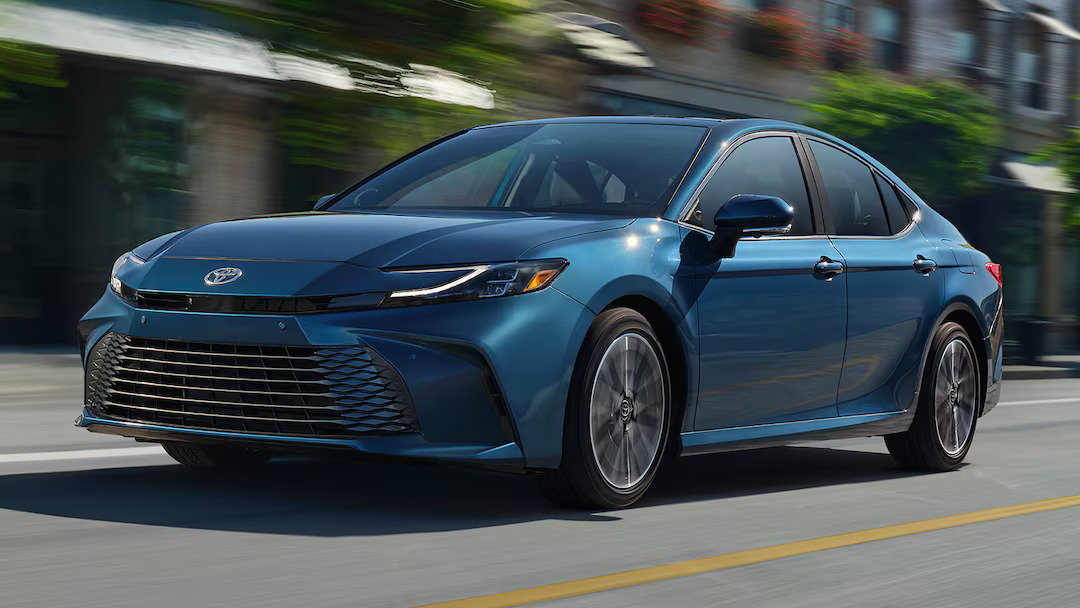
The vehicle’s electrical systems are often a pain point in modern vehicles, maintaining impressive reliability, with few reports of sensor failures or electronic glitches that plague competitors.
Beyond mechanical reliability, Camry owners frequently praise the vehicle’s consistent performance across various conditions. Cold-weather starting issues rarely appear in owner testimonials, and cooling system integrity remains intact even in extreme heat.
Interior components demonstrate similar durability, with seat materials, dashboard controls, and cabin technology maintaining functionality throughout the vehicle’s lifespan.
The Camry’s suspension components also receive high marks, with many owners reporting original shock absorbers and bushings performing adequately well beyond expected replacement intervals.
Toyota’s responsive approach to addressing the few issues that do emerge further enhances owner satisfaction. When minor problems have appeared in certain model years, Toyota has typically implemented solutions quickly through service bulletins or recalls, preventing small concerns from developing into persistent problems.
This proactive stance, combined with the vehicle’s inherent reliability, creates a positive ownership cycle where Camry drivers remain loyal to the model through multiple purchase cycles, further reinforcing its reputation as a benchmark for automotive dependability.
2. Honda Accord
The Honda Accord stands as a paragon of engineering excellence that translates directly into exceptional reliability ratings from its dedicated ownership base. Owners consistently praise the Accord’s balanced approach to performance and dependability, noting that it delivers a more engaging driving experience than many competitors without sacrificing longevity.
Honda’s meticulous approach to powertrain development is evident in both the standard 1.5-liter turbocharged engine and the upgraded 2.0-liter option, with owners reporting smooth operation well beyond 150,000 miles with proper maintenance.
The continuously variable transmission (CVT), often a point of concern in other manufacturers’ vehicles, has demonstrated remarkable durability in the Accord, particularly in models from 2018 onward.
Maintenance accessibility represents another significant factor in the Accord’s positive reliability perception. Honda designed the vehicle with serviceability in mind, placing routine maintenance points within easy reach and utilizing standardized components where possible.
Owners frequently mention the predictability of maintenance scheduling and appreciate that the vehicle provides ample warning before issues arise.
The onboard maintenance reminder system receives particular praise for its accuracy in suggesting service intervals based on actual driving conditions rather than arbitrary mileage targets.
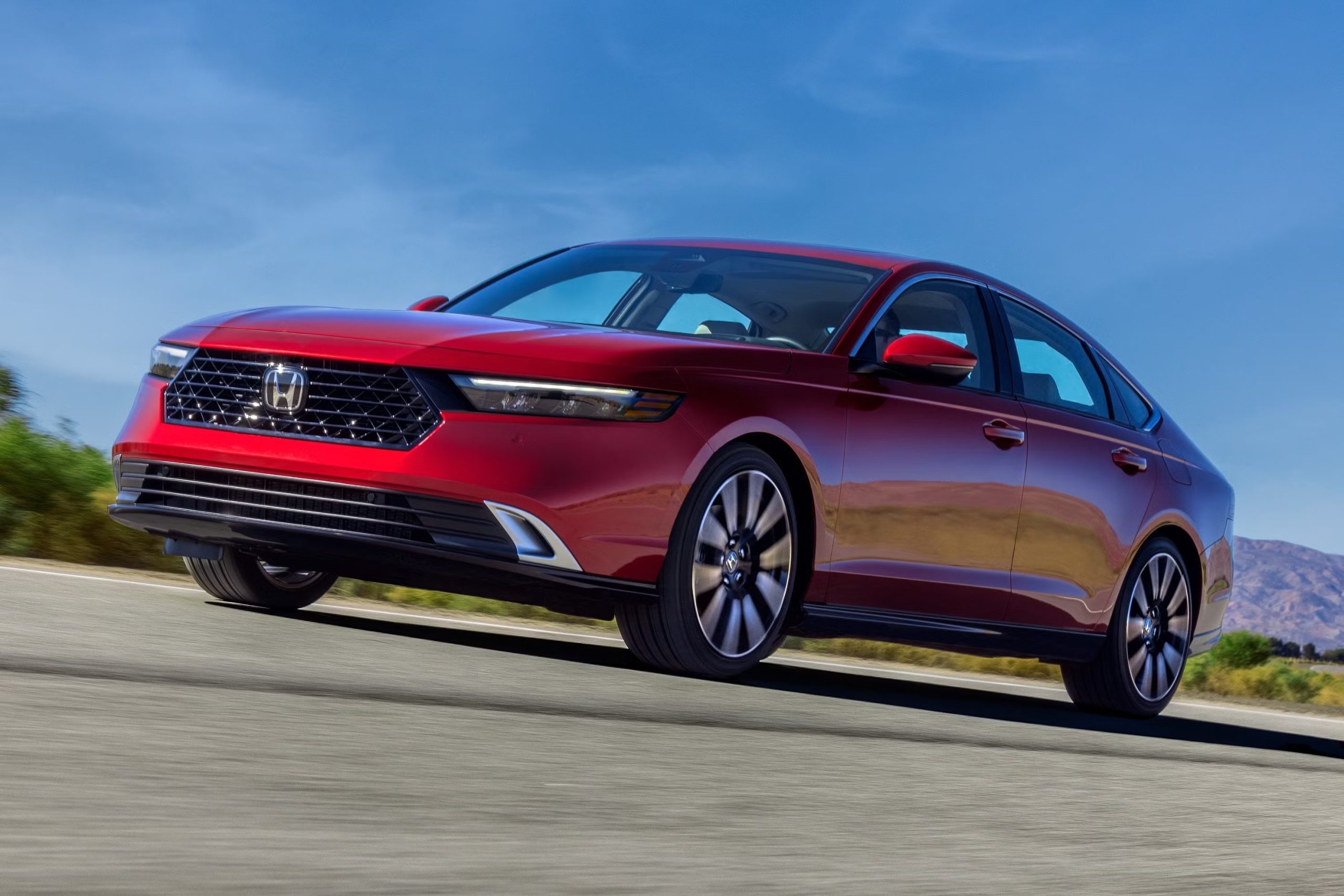
The Accord’s electrical architecture demonstrates impressive resilience against common failure points. Owners report minimal issues with the infotainment system, climate controls, and vehicle sensors even after years of operation.
When software concerns do arise, Honda has established a pattern of addressing them through straightforward updates rather than requiring complex component replacements.
This software support often extends well beyond the warranty period, contributing to the vehicle’s long-term viability. Interior durability further enhances the Accord’s reliability reputation. Seat materials resist wear exceptionally well, and frequently touched surfaces maintain their appearance and functionality despite daily use.
Climate control systems operate consistently across temperature extremes, and window regulators, a common failure point in many vehicles, demonstrate impressive longevity. Owners also highlight the Accord’s structural integrity, noting that the vehicle maintains its solid feel and absence of squeaks or rattles even after years of driving over imperfect road surfaces.
This comprehensive approach to reliability explains why Accord owners often report extraordinary loyalty to the model, with many households purchasing successive generations based on their consistently positive experiences.
3. Lexus ES
The Lexus ES epitomizes the marriage of luxury and reliability, consistently earning some of the highest owner satisfaction ratings in the premium sedan category. Owners frequently describe their ES ownership experience as “effortlessly dependable,” noting that the vehicle delivers its refined driving characteristics year after year with minimal intervention beyond scheduled maintenance.
The ES’s reliability foundation begins with its powertrain, primarily the 3.5-liter V6 engine and 8-speed automatic transmission combination that has been methodically refined over multiple generations.
This powertrain demonstrates exceptional longevity, with many owners reporting 200,000+ miles of operation without internal repairs, a testament to Toyota’s engineering philosophy of evolutionary improvement rather than revolutionary changes.
The ES’s electrical systems demonstrate similar durability, with owners reporting minimal issues with the vehicle’s extensive luxury features. Memory seats, climate control zones, and sophisticated audio systems continue functioning properly well beyond the warranty period.
This reliability extends to the vehicle’s advanced driver assistance systems, with adaptive cruise control, lane-keeping assistance, and automated emergency braking maintaining calibration and functionality throughout ownership.
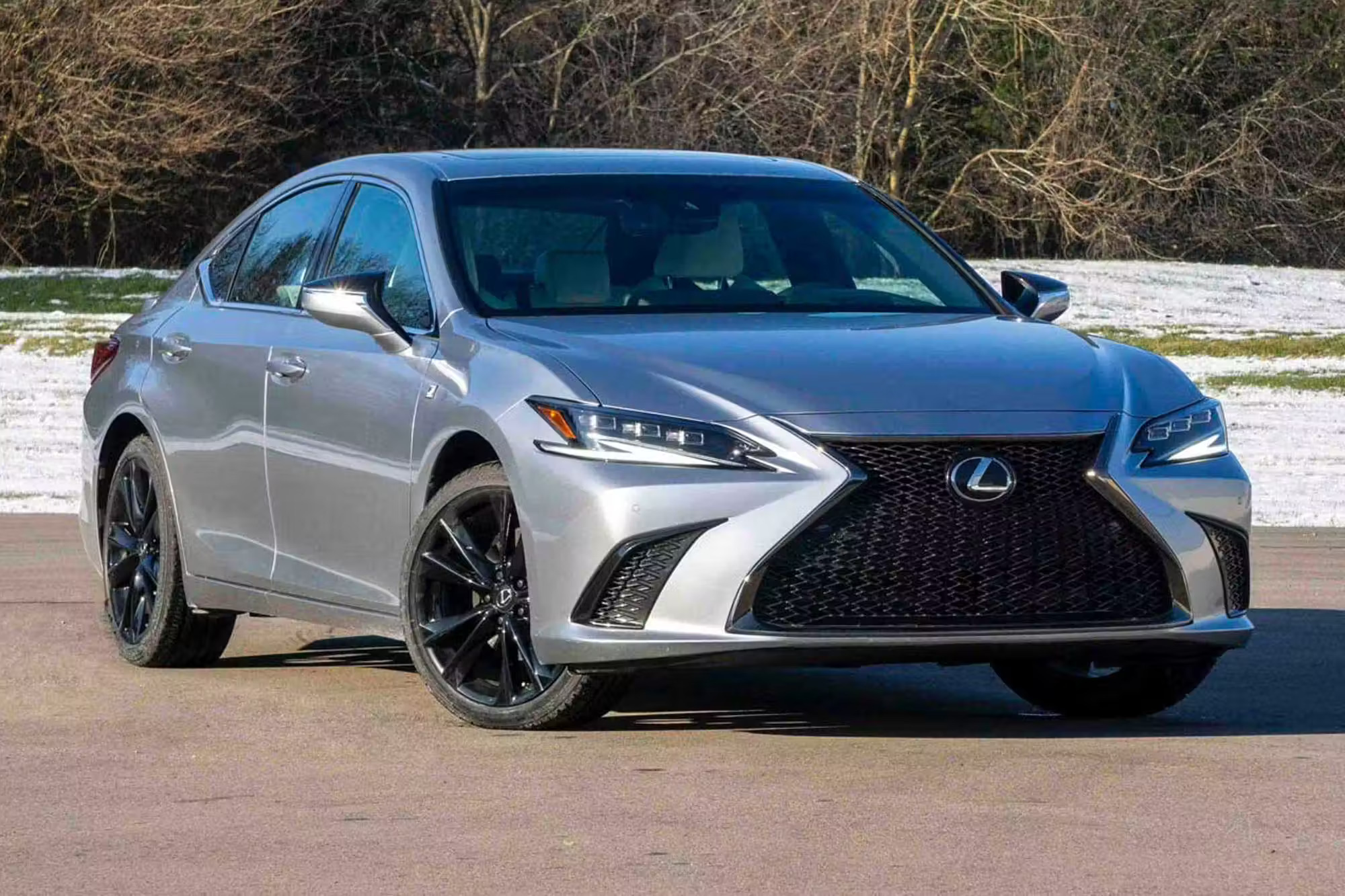
The infotainment system, while occasionally criticized for its interface design, receives high marks for consistent operation and resistance to the software glitches that frequently plague competitors’ systems.
Interior quality contributes significantly to the ES’s stellar reliability perception. Materials throughout the cabin maintain their appearance and tactile properties even after years of exposure to varied climate conditions. Seat mechanisms operate smoothly throughout ownership, and dashboard controls resist the development of common annoyances like button stickiness or illumination failures.
The climate control system a complex component in luxury vehicles, maintains consistent performance across temperature extremes, with owners in both northern and southern regions reporting equivalent reliability.
Lexus’s approach to customer service further enhances the ES’s reliability ratings. The brand’s dealer network consistently receives high marks for maintenance quality and transparency, creating an ownership experience where small issues rarely develop into significant problems.
When repairs become necessary, owners report straightforward diagnosis processes and reasonable repair times.
This comprehensive support system, combined with the vehicle’s inherent build quality, creates a virtuous cycle where minor concerns remain minor throughout the ownership period.
The resulting peace of mind explains why ES owners frequently describe their vehicles as investments that deliver consistent returns in reliability and satisfaction for many years beyond the initial purchase.
4. Mazda MX-5 Miata
The Mazda MX-5 Miata stands as a remarkable achievement in the sports car segment, consistently earning exceptional reliability ratings despite its performance-focused design. Owners report extraordinary mechanical dependability from this lightweight roadster, noting that it delivers its engaging driving experience year after year without the temperamental behavior often associated with performance vehicles.
The Miata’s naturally aspirated four-cylinder engine, whether the previous generation’s 2.0-liter unit or the current 2.0-liter Skyactiv-G powerplant, demonstrates remarkable resilience even when driven enthusiastically.
The six-speed manual transmission, selected by a significant percentage of owners, shows minimal wear even after thousands of aggressive shifts, with clutch components often lasting well beyond 100,000 miles when properly maintained.
The Miata’s simplified approach to engineering contributes significantly to its reliability profile. By avoiding complex technologies like turbocharging, dual-clutch transmissions, and adaptive suspensions that often introduce failure points, Mazda has created a sports car that delivers consistent performance without specialized maintenance requirements.
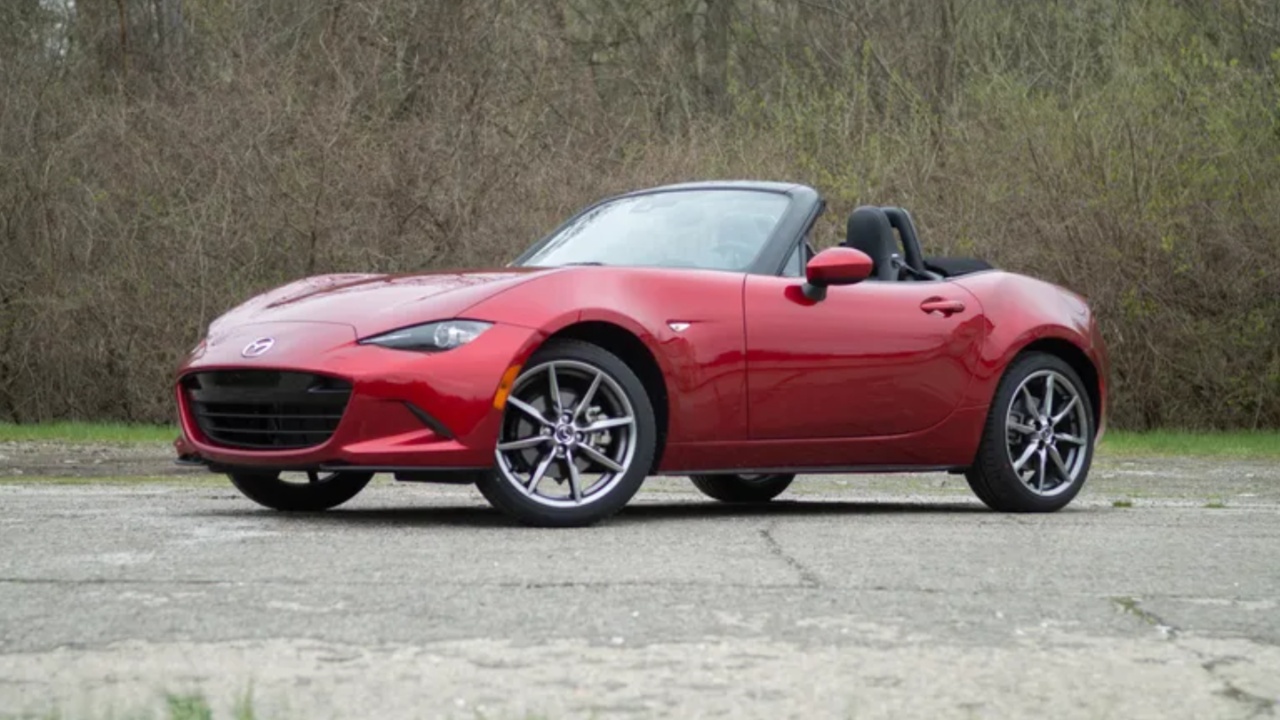
Owners particularly appreciate the accessibility of routine service points, with oil changes, brake services, and fluid replacements accomplished quickly and affordably. This practical approach extends to the convertible top mechanism, whether the standard soft top or the available retractable hardtop, which maintains proper operation and weather sealing throughout years of regular use.
Electronic systems in the MX-5 demonstrate similar reliability. Despite exposure to weather elements that challenge many convertibles, the vehicle’s electrical connections, sensors, and entertainment systems maintain consistent functionality throughout ownership.
Owners report minimal moisture-related issues even after years of regular top-down driving in various conditions.
The instrument cluster and dashboard controls resist the fading and wear that often affect vehicles with significant sun exposure, maintaining both functionality and appearance throughout extended ownership periods.
The Miata’s handling components further enhance its reliability reputation. Despite the demanding loads placed on a sports car’s suspension, steering, and braking systems, MX-5 owners report excellent component longevity with minimal degradation in performance characteristics
. Suspension bushings, often a weak point in performance-oriented vehicles, maintain their properties exceptionally well, preserving the precise handling that attracts buyers to the model.
This comprehensive durability explains why the Miata maintains unusually strong resale values and why many owners hold onto their vehicles for extended periods, treating them not as temporary indulgences but as long-term companions that consistently deliver their signature driving experience with minimal hassle or unexpected expenses.
Also Read: 10 Most Reliable Cars With Manual Transmissions in 2025
5. Toyota Prius
The Toyota Prius has established itself as the benchmark for hybrid reliability, earning extraordinary owner satisfaction ratings that extend well beyond its renowned fuel efficiency.
Prius owners consistently report exceptional longevity from the vehicle’s sophisticated hybrid powertrain, with many examples surpassing 300,000 miles on original battery packs and major components.
This remarkable durability stems from Toyota’s conservative engineering approach, which prioritized reliability over maximum efficiency when designing the Hybrid Synergy Drive system.
The results speak through owner experiences: high-voltage battery packs often maintain more than 80% of their original capacity after a decade of service, inverters demonstrate exceptional resilience to heat cycling, and the planetary gearset transmission operates virtually maintenance-free throughout the vehicle’s lifespan.
Beyond the hybrid-specific components, the Prius demonstrates comprehensive reliability across all vehicle systems. Owners report minimal issues with conventional components like brakes, suspension, and accessory systems.
The regenerative braking system contributes to exceptional brake pad longevity, with many owners reporting original friction material lasting beyond 100,000 miles. Climate control systems maintain consistent performance despite the complex integration with the hybrid powertrain that optimizes compressor efficiency.
Even frequently touched interior components demonstrate remarkable durability, with dashboard controls and seating surfaces maintaining their functionality and appearance despite daily use.
The Prius’s electrical architecture represents another reliability highlight. Despite incorporating more sensors, controllers, and power management systems than conventional vehicles, the model demonstrates exceptional resistance to electronic gremlins.
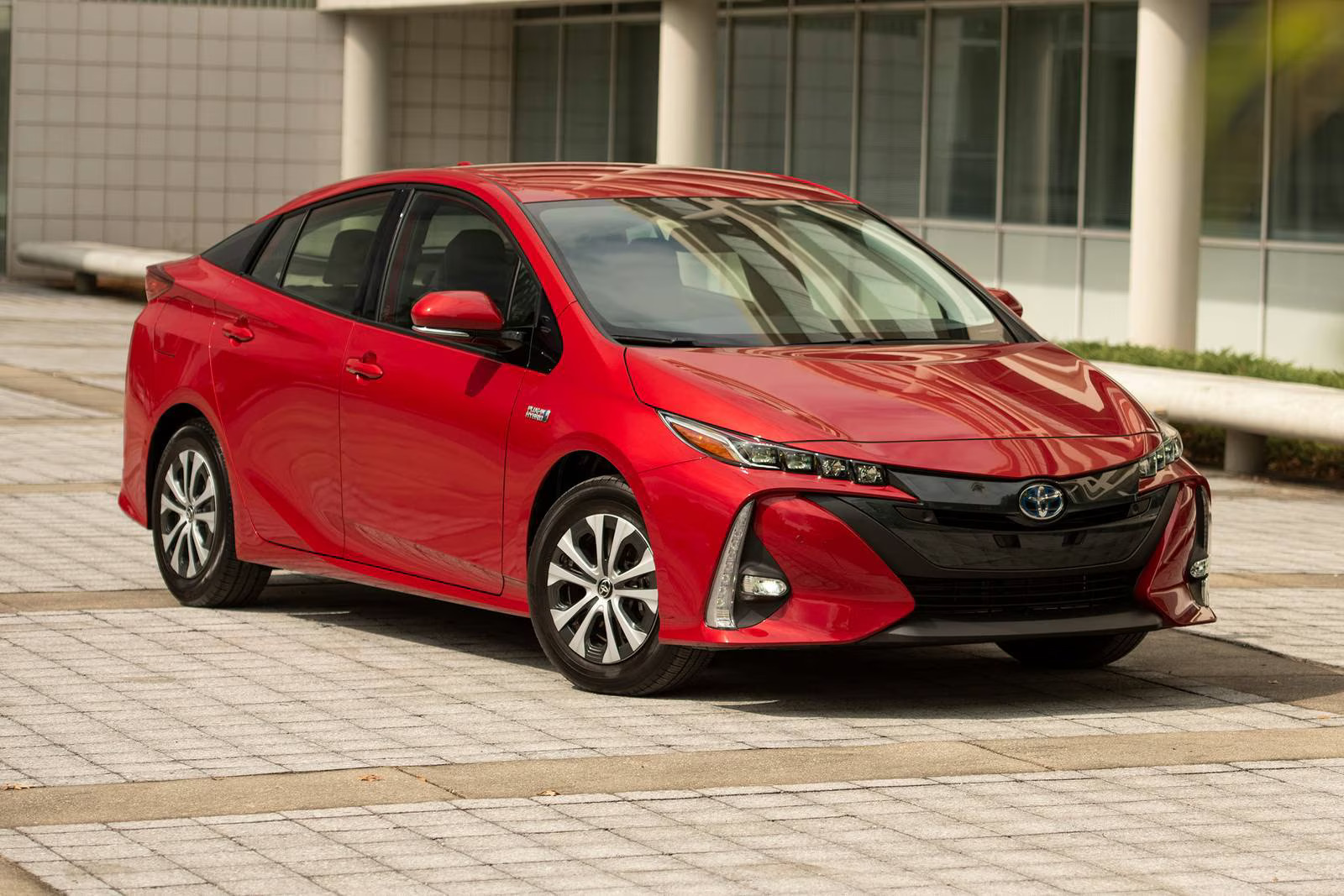
The infotainment system maintains stable operation throughout ownership, and the sophisticated energy management displays continue functioning accurately year after year.
This electronic reliability extends to the advanced driver assistance systems available on more recent generations, with adaptive cruise control and lane-keeping functions maintaining calibration throughout ownership without requiring frequent recalibration or component replacement.
Toyota’s systematic approach to hybrid system development explains much of the Prius’s reliability success. Each generation has built incrementally on proven technology rather than implementing radical redesigns, allowing engineers to identify and address potential failure points before they reach consumers.
When minor issues have emerged in specific production runs, Toyota has typically addressed them through comprehensive service campaigns, enhancing owner confidence.
This methodical engineering philosophy, combined with straightforward maintenance requirements, has created a vehicle that consistently exceeds owner expectations for reliability and longevity. The resulting owner loyalty explains why many Prius drivers report purchasing successive generations based on their overwhelmingly positive experiences with previous models.
6. Porsche 911
The Porsche 911 defies conventional wisdom about sports car reliability, consistently earning exceptional owner satisfaction ratings despite its high-performance characteristics. Owners frequently express amazement at how their precision-engineered vehicles deliver supercar capabilities while simultaneously functioning as reliable daily transportation.
The 911’s flat-six engine, regardless of whether naturally aspirated or turbocharged, demonstrates remarkable durability when properly maintained, with many examples accumulating 150,000+ miles without major internal repairs.
This longevity stems from Porsche’s evolutionary engineering approach that refines proven designs rather than implementing radical changes between generations, allowing for continuous improvement of critical components and systems.
Maintenance requirements, while more stringent than mass-market vehicles, demonstrate remarkable predictability that enhances the ownership experience. Owners report that following Porsche’s prescribed service schedule results in consistent performance and minimal unplanned repairs, even when vehicles see regular track use.
The manufacturer’s transparent approach to preventative maintenance creates a reliability profile where expenses remain foreseeable rather than surprising. The PDK dual-clutch transmission, often a point of concern in performance vehicles, receives particular praise for its robustness, with many high-mileage examples still delivering crisp shifts and seamless operation after years of demanding driving conditions.
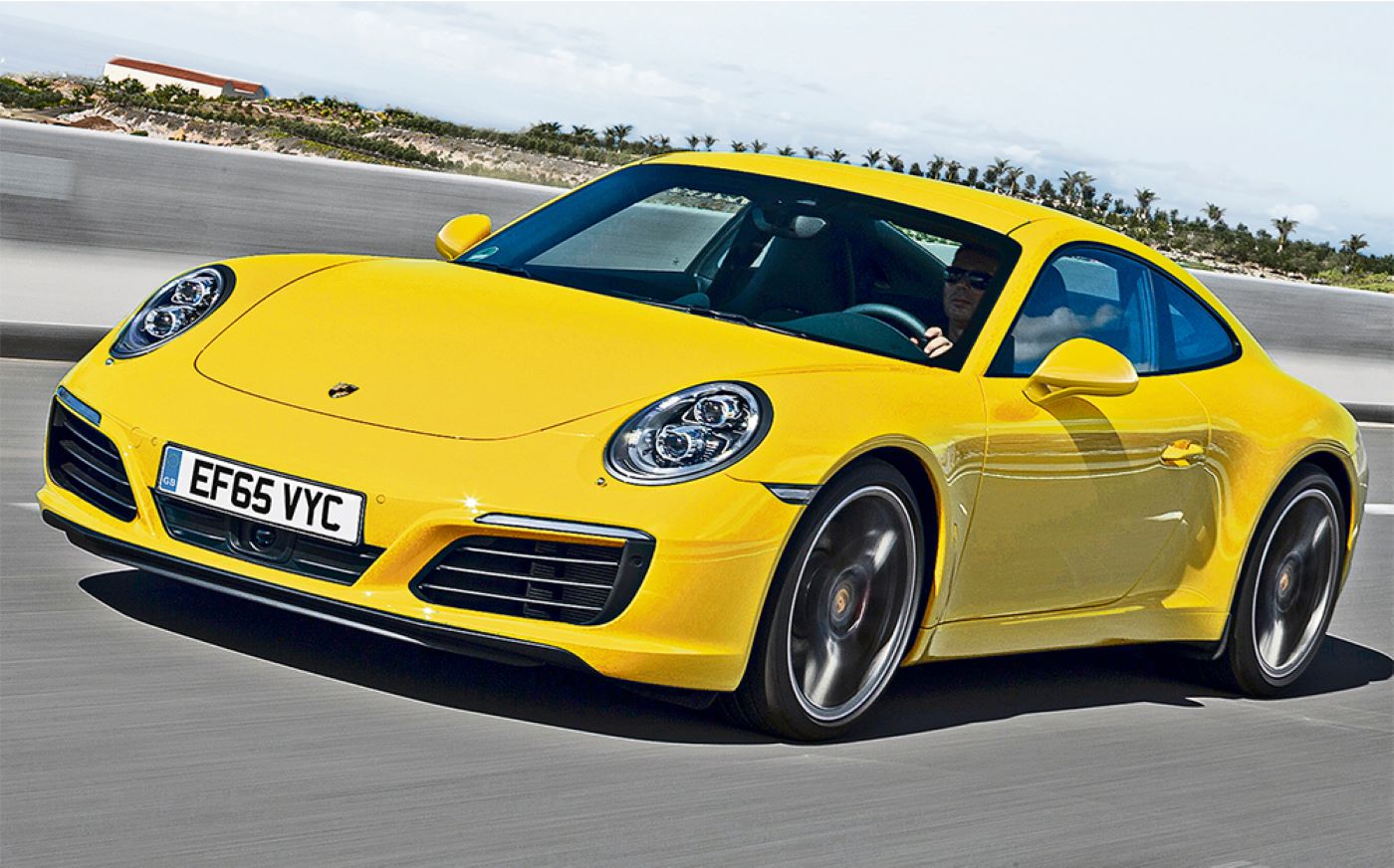
The 911’s electrical architecture further contributes to its positive reliability ratings. Despite incorporating sophisticated infotainment, performance monitoring, and comfort systems, the vehicle’s electronics demonstrate exceptional resistance to the gremlins that often plague luxury performance cars.
Climate control systems maintain consistent performance regardless of external temperatures, seat adjustment mechanisms operate flawlessly through thousands of cycles, and driver assistance features maintain proper calibration throughout ownership. When software updates become available, Porsche’s systematic implementation process ensures minimal disruption to vehicle functionality.
Interior durability completes the 911’s impressive reliability picture. Materials throughout the cabin withstand years of use while maintaining their appearance and tactile properties.
Frequently touched surfaces resist wear exceptionally well, and seat bolsters, often a weak point in performance vehicles, maintain their shape and support despite repeated ingress and egress.
Even the convertible top mechanisms in Cabriolet models demonstrate remarkable longevity, with proper operation and weather sealing maintained throughout extended ownership. This comprehensive approach to durability, combined with Porsche’s responsive dealer network, creates an ownership experience where the vehicle consistently meets or exceeds expectations year after year.
The resulting satisfaction explains why 911 owners frequently report extraordinary brand loyalty, with many individuals purchasing multiple examples throughout their driving careers.
7. Subaru Outback
The Subaru Outback has cultivated a devoted following by delivering exceptional reliability in challenging conditions that would stress less capable vehicles. Owners consistently praise the model’s ability to maintain its functionality and comfort despite exposure to extreme weather, unpaved roads, and heavy-duty use patterns.
The Outback’s horizontally opposed “boxer” engine, whether the standard four-cylinder or optional six-cylinder configuration, demonstrates remarkable longevity when properly maintained, with many examples surpassing 200,000 miles without internal repairs.
The vehicle’s full-time all-wheel-drive system, a potential complexity that could introduce reliability concerns, instead proves exceptionally durable, with center differentials and transfer components often lasting the vehicle’s lifetime without requiring attention beyond fluid changes.
Maintenance accessibility contributes significantly to the Outback’s positive reliability ratings. Despite the vehicle’s somewhat unique engine layout, routine service points remain accessible, and Subaru’s widespread dealer network ensures consistent maintenance quality across regions. Owners particularly appreciate the predictable service schedule that allows for straightforward financial planning throughout ownership.
The continuously variable transmission (CVT), often a concern point in other manufacturers’ vehicles, has demonstrated improving reliability in recent Outback generations, with owners reporting smooth operation well beyond 100,000 miles when maintained according to manufacturer specifications.
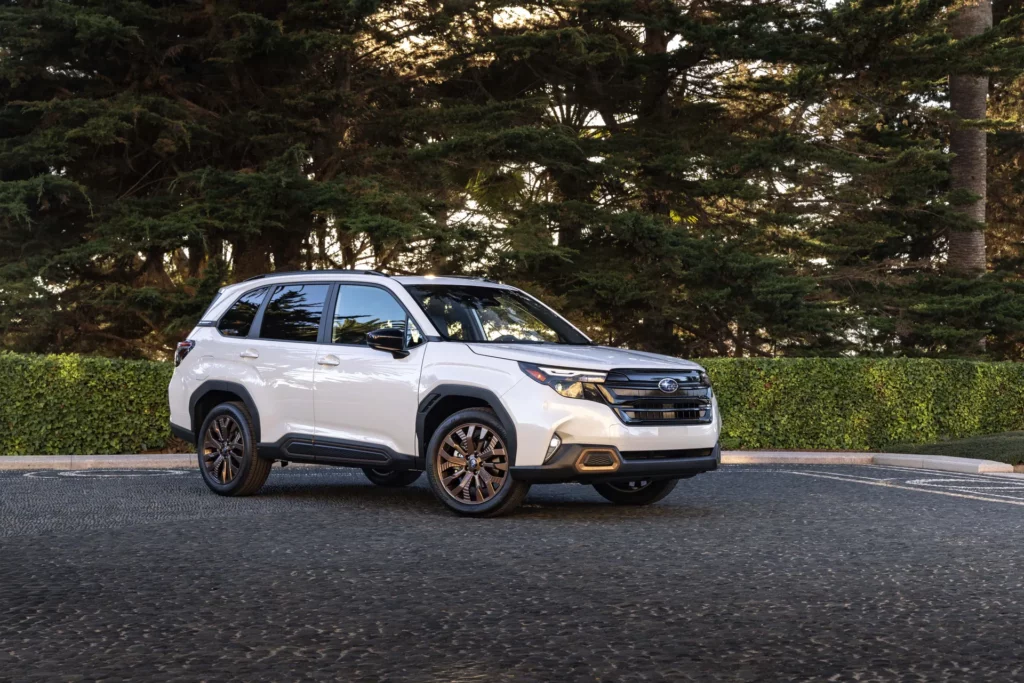
The Outback’s raised ground clearance and robust suspension components prove their worth in reliability ratings from owners who regularly venture beyond paved surfaces. Suspension bushings maintain their properties despite exposure to dust, moisture, and temperature extremes, while underbody protection prevents the damage that often affects less-prepared vehicles used in similar conditions.
Body seals demonstrate exceptional resistance to water ingress even after years of exposure to precipitation and car washes, maintaining the dry, comfortable cabin environment that contributes to satisfaction.
Electronic systems in the Outback show similar durability despite challenging operating environments. The EyeSight driver assistance suite maintains its calibration through temperature fluctuations and weather conditions that challenge some competitors’ systems. Infotainment components demonstrate consistent operation despite exposure to temperature extremes and vibration from rough roads.
The comprehensive heating system, critical for many Outback owners in northern climates, maintains its effectiveness throughout ownership without developing the airflow or temperature control issues that often affect vehicles in cold regions.
This all-weather capability, combined with predictable maintenance requirements, creates an ownership experience where the vehicle consistently performs its intended purpose with minimal drama or unexpected expenses, explaining why many Outback owners maintain extraordinary loyalty to the model across multiple purchase cycles.
8. Mazda CX-5
The Mazda CX-5 has distinguished itself in the crowded compact crossover segment by delivering exceptional reliability alongside its renowned driving dynamics. Owners consistently praise the CX-5’s ability to maintain its engaging performance characteristics and upscale feel throughout extended ownership periods without developing the rattles, squeaks, or degraded ride quality that often affect vehicles in this category.
The CX-5’s powertrain options, primarily the naturally aspirated and turbocharged variants of Mazda’s 2.5-liter Skyactiv-G engine, demonstrate impressive durability when properly maintained.
Owners report minimal oil consumption even after 100,000+ miles, and the direct injection system maintains consistent performance without developing the carbon buildup issues that affect some competitors’ engines.
Transmission reliability represents another significant factor in the CX-5’s positive owner ratings. The six-speed automatic transmission demonstrates exceptional longevity, with fluid changes being the primary maintenance requirement throughout ownership.
Unlike many modern transmissions that prioritize maximum efficiency through complex shifting strategies, Mazda’s simpler approach delivers smoother operation while simultaneously enhancing durability.
This mechanical simplicity extends to the available all-wheel-drive system, which operates unobtrusively while demonstrating impressive component longevity even in regions with challenging winter conditions.
The CX-5’s electrical architecture further contributes to its reliability reputation. Owners report minimal issues with the infotainment system, climate controls, and safety features even after years of operation.
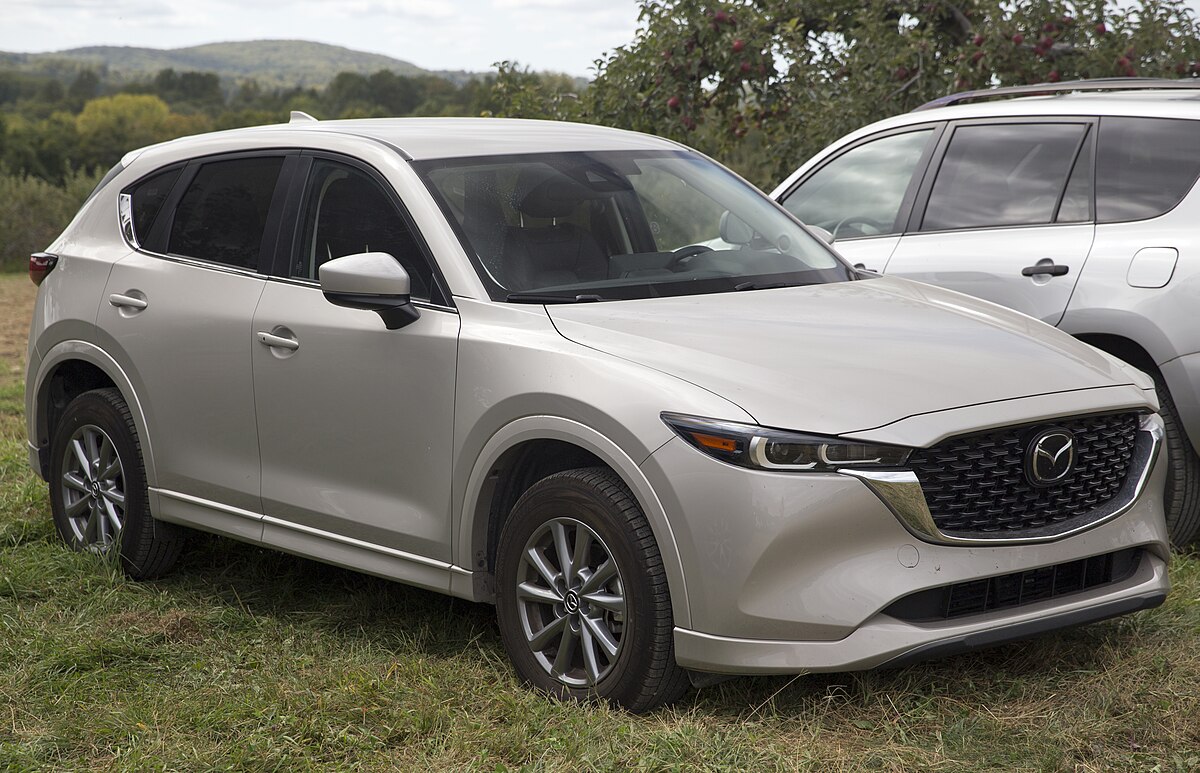
The vehicle’s LED lighting components are often a potential failure point in modern vehicles, maintaining consistent illumination patterns throughout ownership. Power seat mechanisms, window regulators, and other convenience features demonstrate similar durability, maintaining smooth operation through thousands of cycles.
The comprehensive climate control system performs consistently across temperature extremes without developing the airflow inconsistencies or temperature regulation issues that often appear in vehicles as they age.
Interior quality completes the CX-5’s impressive reliability profile. Materials throughout the cabin resist wear exceptionally well, with frequently touched surfaces maintaining their appearance and tactile properties despite daily use. Seat upholstery, whether the standard cloth or available leather, demonstrates impressive resistance to fading, cracking, and deformation.
Dashboard controls remain properly secured and functional throughout ownership, and panel gaps maintain their consistent alignment despite the thermal cycling and vibration that eventually cause issues in less well-constructed vehicles.
This comprehensive approach to quality explains why CX-5 owners report high satisfaction even after years of ownership, with many indicating they would choose the same vehicle again based on their overwhelmingly positive experience with durability, functionality, and long-term value retention.
9. Kia Telluride
The Kia Telluride has rapidly established itself as a reliability standout in the midsize SUV segment, earning exceptional owner satisfaction ratings since its introduction. Despite being a relatively recent addition to the market, the Telluride has demonstrated remarkable mechanical consistency that builds on Kia’s broader quality improvement trajectory.
Owners consistently praise the vehicle’s 3.8-liter V6 engine and eight-speed automatic transmission combination for its smooth, trouble-free operation across varied driving conditions.
The powertrain demonstrates excellent thermal management even under load, maintaining consistent performance whether during highway cruising, urban stop-and-go traffic, or while towing within its rated capacity.
This mechanical reliability extends to the available all-wheel-drive system, which operates seamlessly while demonstrating excellent component durability even in regions with challenging weather conditions.
Electronic reliability represents another significant factor in Telluride’s positive owner ratings. Despite incorporating an extensive suite of technology features, the vehicle maintains consistent functionality across its systems.
The comprehensive infotainment interface operates without freezes or glitches that often affect complex systems, and the driver assistance features maintain proper calibration throughout ownership.
Climate control systems are particularly important in a family-oriented vehicle to deliver consistent temperature regulation across all three rows without developing the airflow imbalances or control issues that sometimes emerge in vehicles with complex HVAC architectures. Power-operated features like the liftgate, sliding sunroof, and adjustable seating maintain smooth operation through repeated cycles.
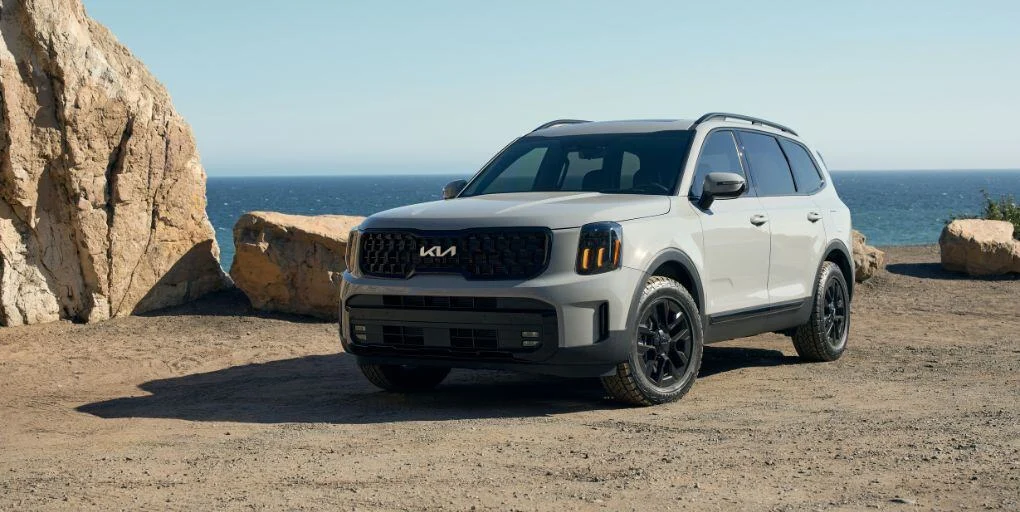
Interior durability further enhances the Telluride’s reliability perception. Materials throughout the cabin demonstrate exceptional resistance to wear, staining, and damage despite the demanding use patterns typical of family vehicles. High-traffic areas like door panels, center consoles, and seat bolsters maintain their appearance and integrity even after thousands of entry and exit cycles.
The third-row seating mechanism, a potential weak point in three-row SUVs, operates smoothly throughout ownership without developing alignment issues or stiffness that often affects folding systems over time. Cargo area components demonstrate similar durability, with floor panels and tie-down points maintaining their functionality despite frequent loading and unloading of heavy items.
Kia’s industry-leading warranty program complements the Telluride’s inherent reliability, creating an ownership experience where the few issues that do emerge are addressed promptly and comprehensively. This systematic support, combined with the vehicle’s impressive build quality, explains why Telluride owners report exceptional satisfaction and why the model maintains strong resale values despite Kia’s historical depreciation patterns.
The resulting owner enthusiasm manifests in remarkable brand loyalty, with many buyers indicating they’ve been converted to long-term Kia ownership based on their overwhelmingly positive Telluride experience, a testament to how thoroughly the vehicle exceeds reliability expectations in its competitive segment.
10. Toyota 4Runner
The Toyota 4Runner stands as a testament to old-school reliability principles in an era of increasingly complex vehicles. Owners consistently praise the model’s extraordinary durability across decades of production, with many examples surpassing 300,000 miles with minimal major repairs.
The 4Runner’s 4.0-liter V6 engine, virtually unchanged since 2010, demonstrates exceptional longevity when properly maintained, with many high-mileage examples still delivering original factory power specifications without internal repairs.
This durability extends to the five-speed automatic transmission, which prioritizes robustness over maximum efficiency, resulting in remarkable longevity even under demanding conditions, including towing and off-road use. The transfer case, differentials, and other driveline components demonstrate similar resilience, maintaining proper function despite exposure to conditions that often accelerate wear in less capable vehicles.
Suspension durability represents another significant factor in the 4Runner’s positive reliability ratings. Despite its off-road capabilities that subject components to significant stress, owners report excellent longevity from bushings, ball joints, and shock absorbers.
The body-on-frame construction, increasingly rare in modern SUVs, contributes to this durability by isolating suspension components from body flexing. This traditional engineering approach also enhances long-term structural integrity, with owners reporting minimal body squeaks or rattles even after years of use on challenging terrain.
The resulting rock-solid feel throughout ownership significantly enhances satisfaction, particularly among owners who value long-term dependability over cutting-edge features.
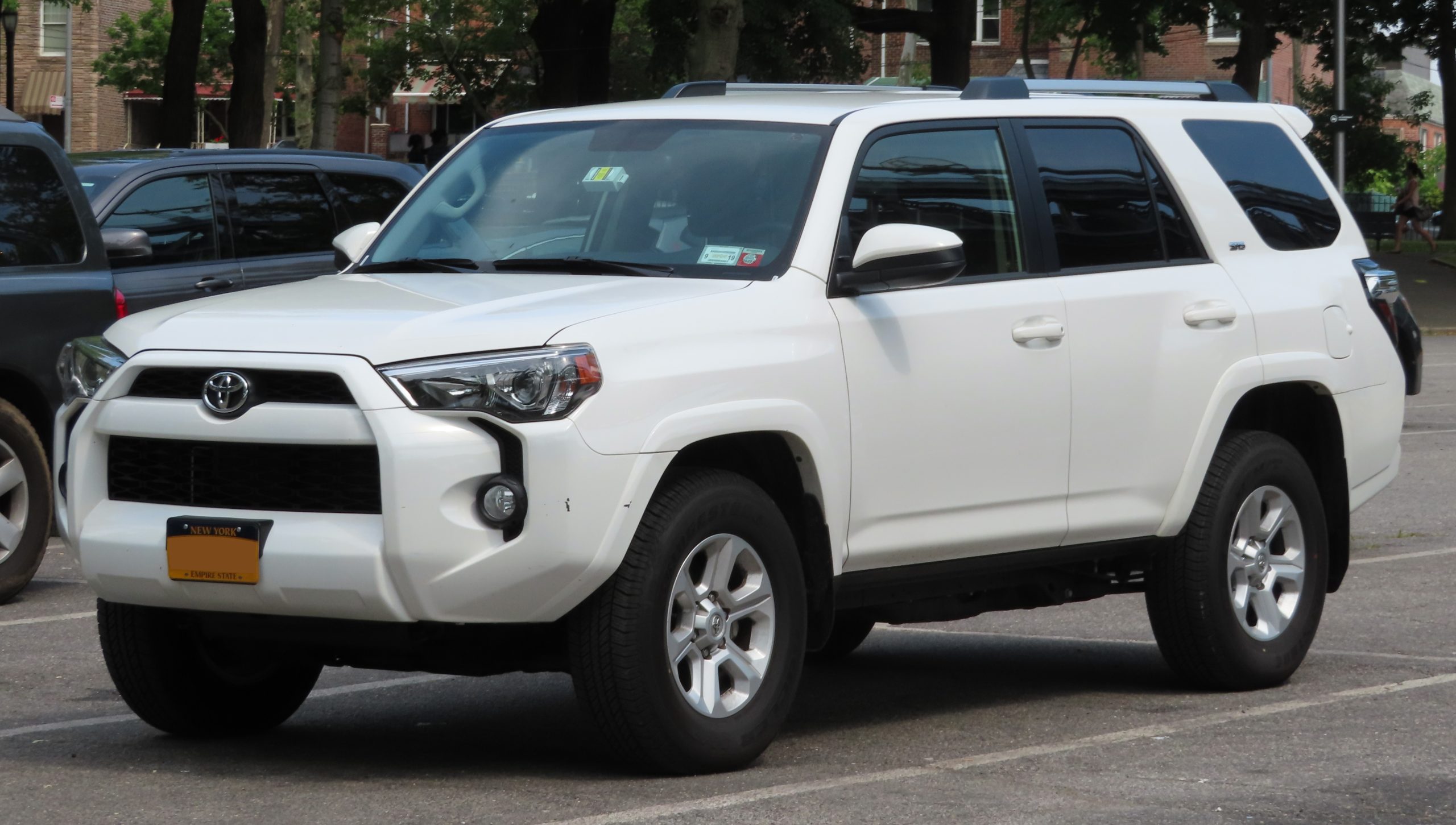
The 4Runner’s approach to electronics further contributes to its reliability reputation. By implementing proven technology rather than bleeding-edge systems, Toyota has created an electrical architecture remarkably resistant to the gremlins that often affect more complex vehicles. Essential systems like climate controls, power windows, and four-wheel-drive selectors maintain consistent functionality throughout ownership.
Even in more recent model years with expanded infotainment capabilities, the systems demonstrate excellent stability without the frequent updates or recalibrations often required in newer designs. This electronics durability extends to the various sensors and control modules that manage engine operation, with many high-mileage examples still running on original oxygen sensors, throttle bodies, and fuel system components.
Interior durability completes the 4Runner’s comprehensive reliability profile. Materials throughout the cabin demonstrate exceptional resistance to wear despite exposure to the elements that often accompany adventure-oriented use. Seat upholstery, whether cloth or available leather, withstands thousands of entry/exit cycles without developing tears or excessive wear patterns.
Cargo area components maintain their functionality despite frequent loading of heavy, dirty equipment that would accelerate deterioration in less robustly constructed vehicles.
This all-around durability explains why 4Runner owners report extraordinary satisfaction even after a decade or more of ownership, with many indicating they’ll replace their vehicle only with another 4Runner, a testament to the model’s reputation as arguably the most dependable SUV currently available for buyers who prioritize long-term reliability over technological sophistication.
11. Honda Civic
The Honda Civic has earned an enviable reputation for reliability that spans generations, consistently receiving exceptional owner satisfaction ratings across its various body styles and powertrain configurations.
Owners frequently report extraordinary longevity from their vehicles, with many examples exceeding 250,000 miles while maintaining original engine and transmission functionality.
The Civic’s four-cylinder engines, whether naturally aspirated or the more recent turbocharged offerings, demonstrate remarkable durability when properly maintained, with minimal oil consumption or performance degradation even after years of service.
Transmission reliability varies somewhat by generation, with the manual options consistently earning the highest praise, while automatic and CVT variants in more recent generations show significant improvement over earlier iterations, maintaining smooth operation well beyond 100,000 miles with proper fluid maintenance.
Electrical system integrity contributes significantly to the Civic’s positive reliability perceptions. Owners report minimal issues with sensors, control modules, and convenience features even after extended ownership periods.
The comprehensive instrument cluster maintains accurate readings throughout the vehicle’s lifespan, and dashboard controls resist the degradation in feel or function that often affects frequently used components.
The climate control system, whether manual or automatic, maintains consistent temperature regulation and airflow direction without developing the progressive issues that often appear in vehicles as they age.

This electronic durability extends to the various powertrain management systems, with oxygen sensors, throttle bodies, and fuel system components often lasting well beyond typical replacement intervals.
Suspension components in the Civic demonstrate similar longevity despite the varied road conditions encountered during daily driving. Owners report excellent durability from bushings, ball joints, and shock absorbers, with many vehicles maintaining their characteristic responsive handling characteristics even after 100,000+ miles of service.
Braking system components show impressive durability as well, with many owners reporting original rotors lasting through multiple pad replacements when properly maintained.
The Civic’s unibody structure maintains its integrity exceptionally well, preserving proper alignment specifications and crash protection capabilities throughout extended ownership while simultaneously preventing the development of squeaks and rattles that often plague aging vehicles.
Interior quality further enhances the Civic’s reliability perception. Materials throughout the cabin demonstrate impressive resistance to wear despite daily use. Seat upholstery, whether cloth or available leather, maintains its appearance and support characteristics through thousands of entry/exit cycles.
Frequently touched surfaces like steering wheels and door pulls resist the shine and degradation that often affect high-traffic areas in less durable interiors. Even modest features like cup holders, storage compartments, and USB ports maintain their functionality throughout ownership.
This comprehensive approach to durability explains why many Civic owners report extraordinary satisfaction with their vehicles even after years of service, and why the model has built a reputation as a genuine long-term value proposition in the compact car segment, where cost-cutting often affects long-term reliability.
12. Lexus RX
The Lexus RX has established itself as the benchmark for luxury crossover reliability, consistently earning exceptional owner satisfaction ratings across multiple generations. Owners frequently describe the ownership experience as remarkably predictable, with the vehicle delivering its refined driving characteristics year after year with minimal unplanned maintenance.
The RX’s powertrain options, primarily the 3.5-liter V6 in conventional models and the sophisticated hybrid system in RX450h variants, demonstrate extraordinary longevity when properly maintained. Many examples exceed 200,000 miles without internal engine repairs, and transmission components maintain smooth operation throughout extended ownership periods.
The hybrid system demonstrates particular durability, with high-voltage battery packs often maintaining more than 80% of their original capacity after a decade of service and inverter/converter components showing impressive resistance to the thermal cycling that often affects hybrid electronics.
Electronic system reliability represents another significant factor in the RX’s positive owner ratings. Despite incorporating a comprehensive suite of luxury features, the vehicle’s electrical architecture demonstrates exceptional resistance to the gremlins that often plague luxury vehicles.
The infotainment system maintains stable operation throughout ownership, climate control zones deliver consistent temperature regulation, and driver assistance features maintain proper calibration without requiring frequent recalibration.
Power-operated features like the liftgate, adjustable seats, and sunroof mechanisms operate smoothly through thousands of cycles without developing the binding or misalignment issues that often affect luxury convenience features as vehicles age.
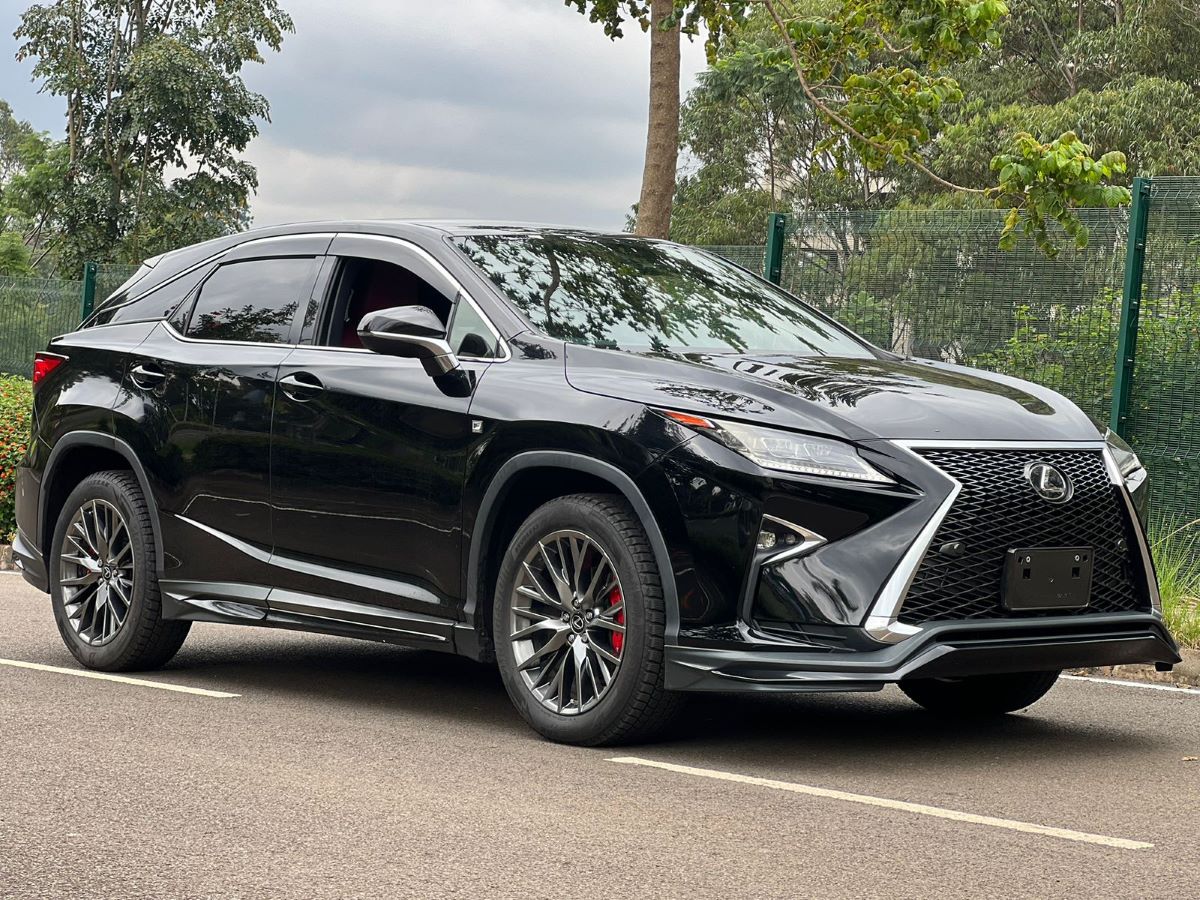
Interior durability further enhances the RX’s reliability reputation. Materials throughout the cabin maintain their appearance and tactile properties despite daily use. Leather surfaces resist cracking and excessive wear even after years of exposure to varied climate conditions.
Wood and metal trim elements maintain their finish without developing the bubbling or delamination that sometimes affects luxury interior components. Even high-traffic areas like steering wheels, shift levers, and door pulls maintain their original appearance and feel without developing the shine or degradation common in less durable interiors.
This material quality extends to less visible components, with interior mechanisms like seat tracks, console lids, and storage compartments maintaining smooth operation throughout extended ownership periods.
The RX’s body structure and exterior components demonstrate similar longevity. Paint finishes maintain their luster with proper care, and body seals resist water intrusion even after years of exposure to varied weather conditions.
Suspension components maintain their ride quality characteristics despite the additional complexity of available adaptive systems in higher trim levels. LED lighting components are often a potential failure point in luxury vehicles, maintaining consistent illumination patterns throughout ownership.
This comprehensive approach to durability, combined with Lexus’s renowned dealer service experience, creates an ownership profile where the vehicle consistently meets or exceeds expectations year after year.
The resulting satisfaction explains why RX owners demonstrate extraordinary brand loyalty, with many households purchasing successive generations based on their overwhelmingly positive experiences with previous models.
Also Read: 12 Vehicles With the Best DIY Repairability

